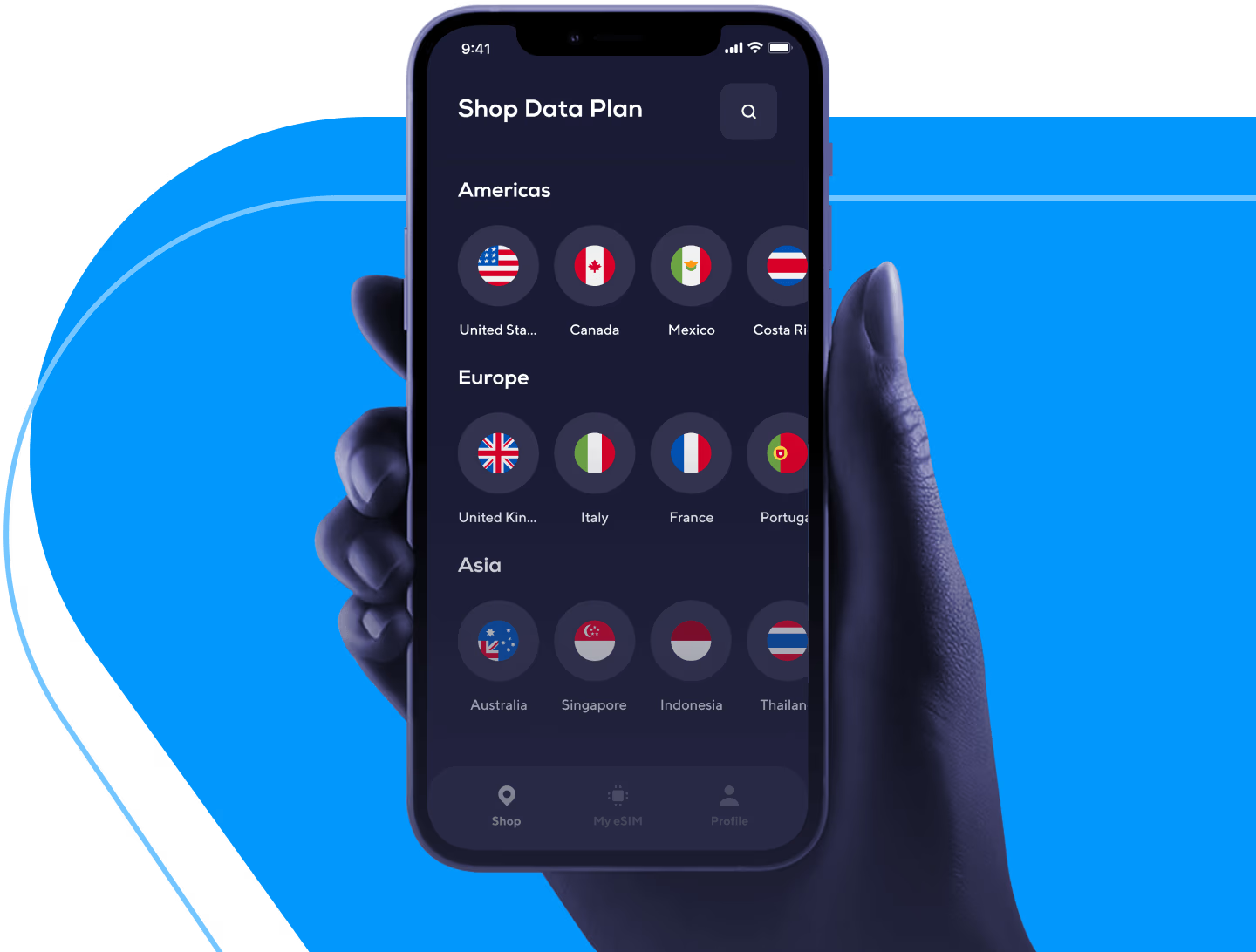
Carriers Expand eSIM Support as Travel Goes Digital — And Users Expect More
Something big is happening in the mobile world right now. Not dramatic. Not loud. But very real. Carriers everywhere are suddenly expanding their eSIM support—faster, wider, and with much less hesitation than even a year ago.
For a long time, eSIM felt like one of those technologies that should have taken over but somehow never did. Travelers loved it, tech companies promoted it, device makers embraced it… Yet operators took their time, quietly dragging their feet.
But the pause is over. Carriers have flipped the switch. And what we’re watching is less a “tech upgrade” and more a fundamental shift in how people want to connect when they move through the world.
So why now? Why are operators finally leaning into eSIM? And what does it mean for how we travel, how we manage our data plans, and how we think about connectivity in 2025?
Let’s unpack what’s really going on behind the scenes.
1. Travel is booming again—and users are tired of roaming roulette
If you’ve traveled recently, you already know: airports are packed, international routes are booming, and people are exploring more countries per trip than ever.
But one thing hasn’t changed—everyone still hates roaming surprises.
Travelers are tired of:
- €8-per-day “roaming packages” that activate automatically
- Confusing zones (“Europe, but not Switzerland. Latin America, but not Panama.”
- Airport SIM shops are charging double what you’d pay online
- Landing in a new country with no data at all
So what did travelers do? They quietly solved the problem themselves. They started buying eSIMs from digital marketplaces where everything is instant and transparent.
Carriers noticed this. And the realization finally hit:
If we don’t expand eSIM support, customers will simply buy their connectivity somewhere else.
That’s why you’re seeing major operators—Vodafone, Orange, T-Mobile, AT&T, O2, Telstra, and Singtel—all roll out better eSIM onboarding, easier switches, and travel add-ons inside their apps.
They don’t want to be left out of the travel connectivity journey anymore.
2. Apple forced everyone’s hand—and now the whole ecosystem is following
Let’s be honest: the industry didn’t embrace eSIM because it felt inspired.
It embraced it because Apple made a bold move.
In 2022, the US got the first eSIM-only iPhone. No SIM tray. No fallback. Just digital connectivity.
It was a message to carriers worldwide:
“If you don’t support eSIM properly, your customers won’t be able to use your service on new devices.”
That’s… motivating.
Since then:
- Samsung added dual eSIM across more Galaxy models
- Google made eSIM transfer insanely easy on Pixel
- Xiaomi, Motorola, Oppo, and Honor adopted eSIM in mainstream phones
- Smartwatches, tablets, and laptops quietly went eSIM-first
At this point, saying “we don’t fully support eSIM” is like saying “we don’t fully support Wi-Fi.”
It’s simply not acceptable anymore.
3. eSIM quietly saves carriers millions (but they won’t say it out loud)
Here’s a less romantic reason carriers are expanding eSIM:
It’s cheaper. Way cheaper.
Physical SIMs require:
- Manufacturing
- Packaging
- Distribution
- Warehousing
- Retail activation
- Shipping replacements
- In-store assistance
All expensive. All unnecessary with eSIM.
For carriers, eliminating these costs at scale means millions in savings—while the user experience actually improves.
This is one of those rare telecom moments where efficiency and customer value align perfectly.
4. People expect onboarding to be instant—and eSIM finally delivers
We’re all used to tapping a button and getting the thing we paid for: tickets, hotel confirmations, boarding passes, subscriptions. Everything is digital and instant.
Connectivity is the last thing that felt stuck in the 2000s.
eSIM finally fixes that. And users now expect:
- Activation without QR codes
- Switching plans inside the app
- Installing a new number in seconds
- Travel data that activates the moment they land
- No more fiddly little SIM ejector tools
Carriers can no longer get away with “visit our store to activate your service.” Not when users can download a travel eSIM in 30 seconds and be online instantly.
Digital onboarding is now the standard, not the upgrade.
5. The rise of multi-SIM lifestyles
Here’s something that doesn’t get enough attention: the way people use phone numbers has changed.
It’s no longer:
One number, one SIM, one plan.
Today, people want:
- One line for work
- One personal number
- A travel eSIM
- A regional plan for cross-border commuting
- Occasional destination-specific travel data
- Local numbers for certain apps
Smartphones now support multiple eSIM profiles precisely because this is the reality. And carriers expanding eSIM support aren’t just following a trend—they’re adapting to how people actually use their devices.
The concept of a “single SIM identity” is gone.
The new normal is fluid, flexible, multi-profile connectivity.
6. Carriers see new revenue in digital-only services
When everything becomes digital, carriers can create entirely new products that never made sense with physical SIM cards.
We’re already seeing:
- Travel passes that activate only when leaving your home country
- “Try us free” eSIM trials
- Hourly and weekend data boosts
- Smart regional bundles
- Local eSIMs for border cities and airports
- Temporary numbers for short stays or remote workers
These micro-plans weren’t possible before. Now they’re becoming part of a carrier’s digital toolbox.
eSIM isn’t just a technical shift—it’s a business model shift.
7. Global eSIM marketplaces raised the bar—and carriers had to respond
Platforms like Airalo, Nomad, Airhub, GigSky, Yesim, Ubigi, and others didn’t just sell eSIMs. They redesigned the whole experience.
Marketplaces offer:
- Instant activation
- Clear prices
- Transparent country lists
- Multiple providers to compare
- No long-term contracts
Users love that level of control.
Carriers had to respond because, for the first time ever, travelers weren’t forced into roaming. They had real alternatives—often cheaper and easier.
Competition finally pushed telcos to innovate. A rare and beautiful thing.
8. eSIM is laying the foundation for borderless connectivity
This is where things get exciting.
We’re moving toward a world where connectivity isn’t something you “set up”—it just follows you.
Imagine:
- One plan that adjusts prices based on where you travel
- Automatic switches to local networks
- Travel data packs that activate the moment your plane lands
- No roaming zones
- One profile that works across multiple countries seamlessly
This is already starting in parts of Asia and Europe. It will only accelerate as eSIM support expands.
Carriers want to be part of this future instead of watching it happen without them.
The bottom line: users led this transformation—carriers just caught up
Let’s be honest: carriers didn’t decide to expand eSIM support because they suddenly became innovators.
Users pushed them there.
Travelers refused to pay overpriced roaming.
Device makers eliminated the SIM tray.
Digital nomads normalized multi-SIM lifestyles.
Marketplaces proved that activation could be instant.
Businesses demanded more flexible mobility solutions.
Carriers realized they could either adapt or be replaced.
And now the acceleration is happening everywhere.
We’re entering a new era of connectivity:
faster, smarter, digital-first, and finally aligned with how people actually live and travel.
It took a while to get here. But now that the shift has started, it’s not slowing down.













